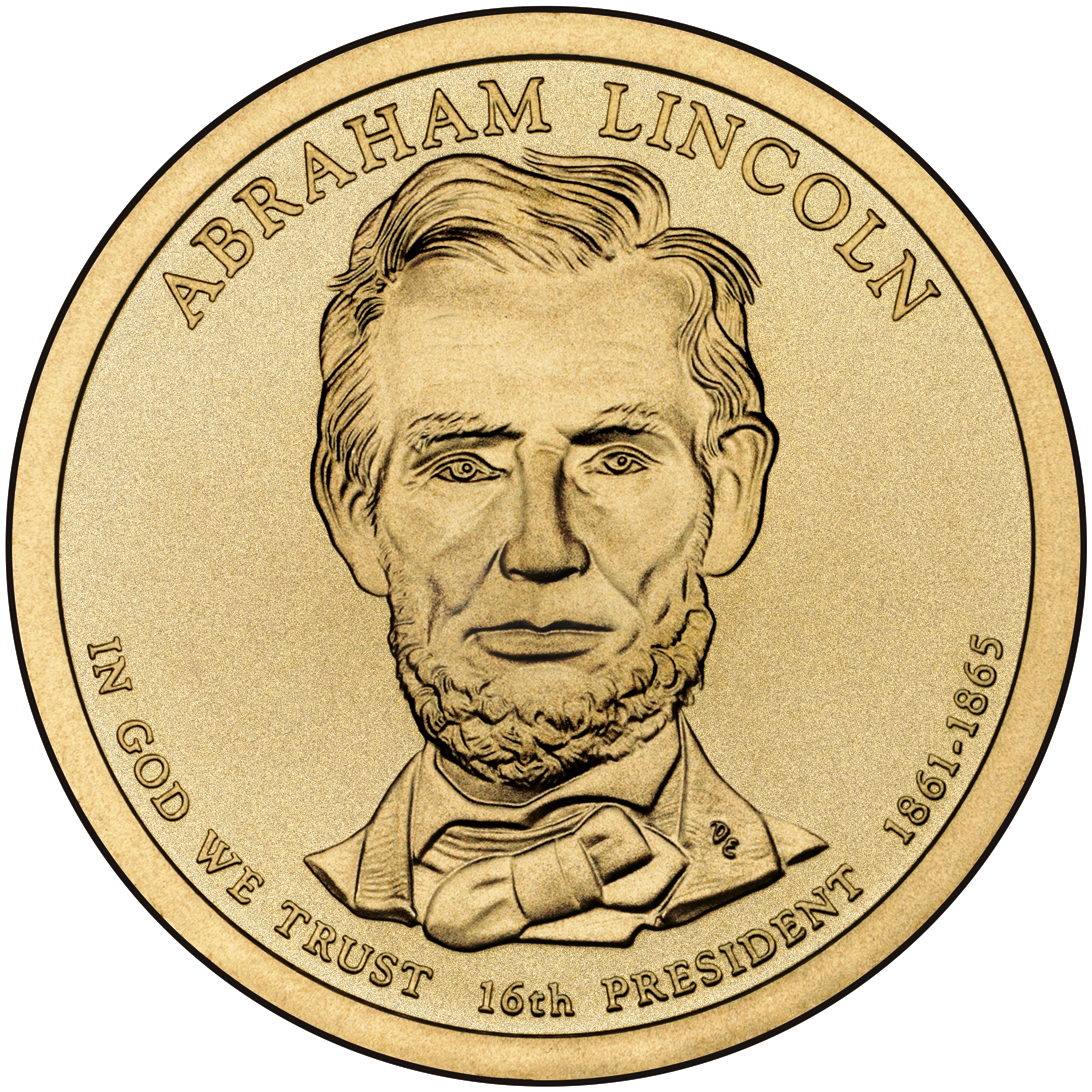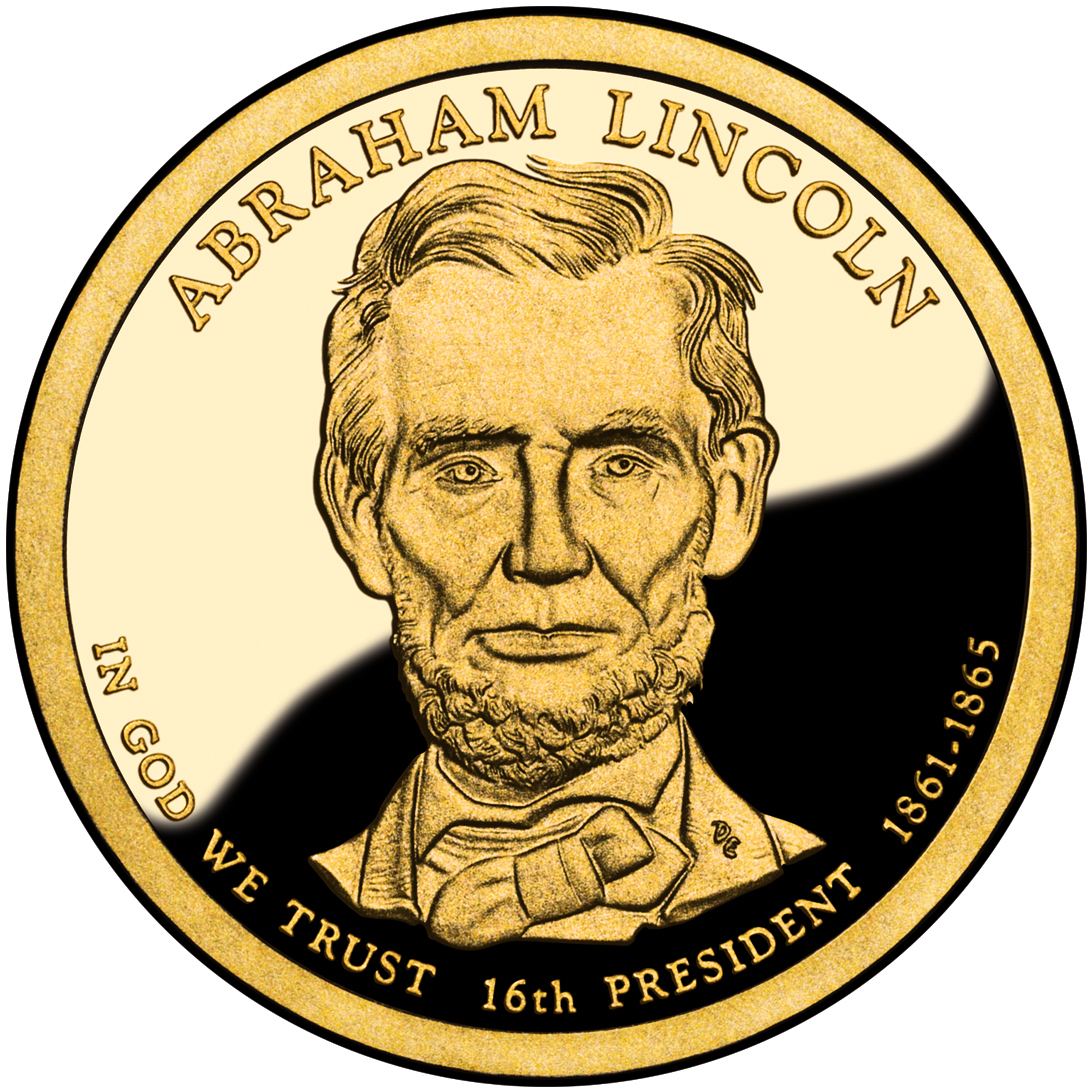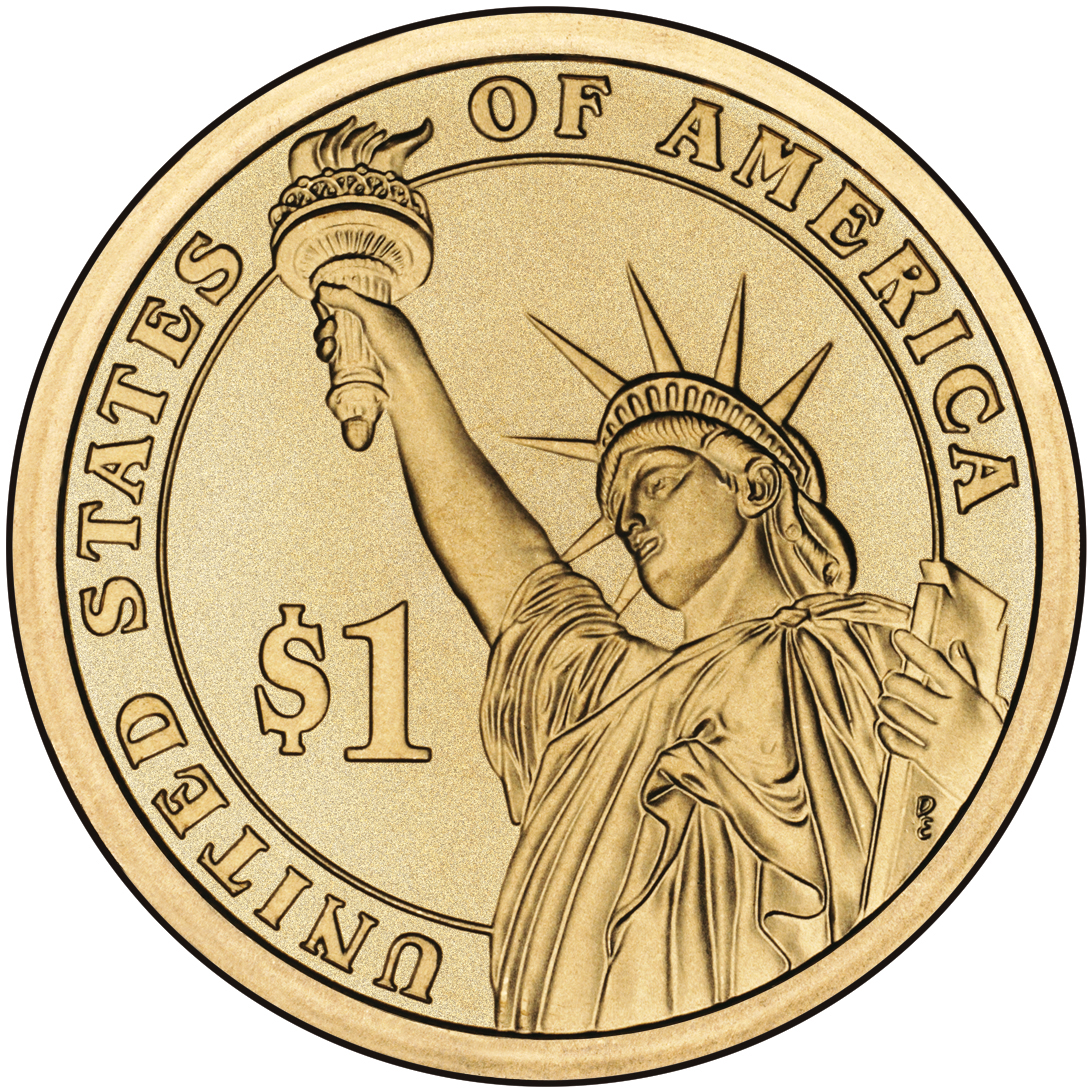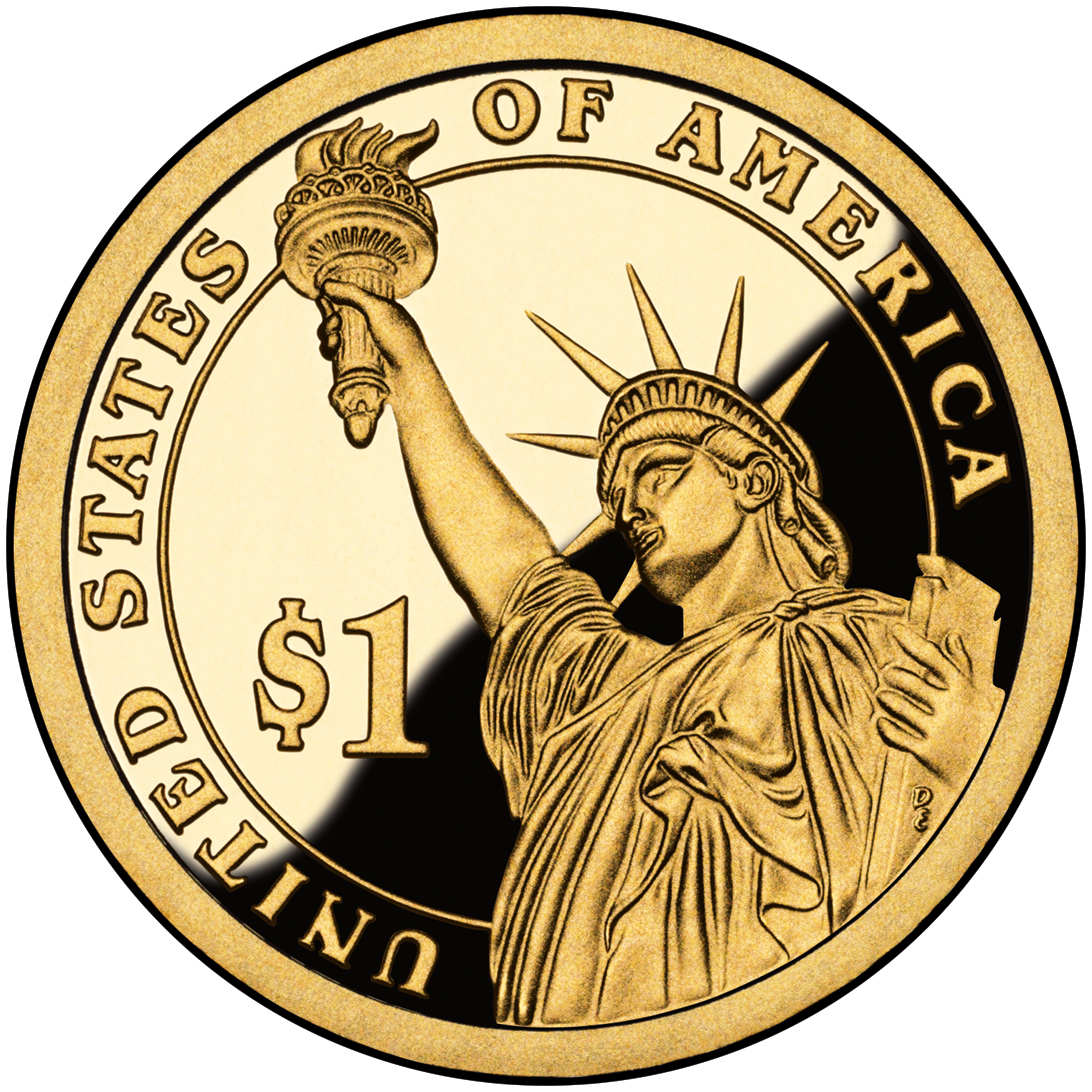Abraham Lincoln Presidential $1 Coin
- Year of Issue: 2010
- Authorizing Legislation: Public Law 109–145
Background
Abraham Lincoln, the 16th U.S. President, was born February 12, 1809, near Hodgenville, Ky., into a poor frontier family. A self-taught lawyer, he also served in the Illinois legislature and the U.S. House of Representatives. In 1858, while campaigning for a seat in the U.S. Senate, Lincoln engaged incumbent Stephen A. Douglas in a series of debates over slavery. Though he lost the election, Lincoln’s eloquence won him national attention, and in 1860, he received the Republican Presidential nomination. Lincoln became President of the United States in 1861 as the Nation descended into the Civil War.
While he was President, Lincoln issued the Emancipation Proclamation, which freed the slaves living in the Confederacy. Although the Confederate States ignored the proclamation, it allowed Union soldiers to free slaves they found in the South and recruit them into their army. By the time the Civil War ended, one out of eight members of the Union Army was black. On November 19, 1863, he delivered his famous Gettysburg Address. His example of assuming sole authority during a time of war was followed by later Presidents, including Woodrow Wilson in World War I and Franklin Roosevelt in World War II. While the Civil War and efforts to abolish slavery dominated his presidency, Lincoln also signed into law the Homestead Act, which made it possible for poor people to buy land provided they agreed to settle and work there for at least five years. This law began the settlement of the American West.
On April 14, 1865—only a few weeks into his second administration and just as the Civil War was ending—Lincoln was shot by Southern sympathizer John Wilkes Booth, and died the next morning in Washington, D.C.
Coinage Legislation under President Abraham Lincoln
- Act of April 21, 1862, authorized a United States Mint facility at Denver.
- Act of March 3, 1863, authorized a United States Mint facility at Carson City, Nevada.
- Act of April 22, 1864, amended Act of February 21, 1857, so that “…all laws now in force relating to the coins of the United States….be extended to the coinage herein authorized…for the security of the coin, regulating and guarding the process of striking and coining, for preventing debasement or counterfeiting, or for any other purpose…”
- Act of June 8, 1864, punished and prevented the counterfeiting of coins in the United States.
- Act of March 3, 1865, authorized coinage of the 3-cent piece.
Characteristics
Obverse Inscriptions
- ABRAHAM LINCOLN
- 16TH PRESIDENT 1861-1865
- IN GOD WE TRUST
Reverse Inscriptions
- UNITED STATES OF AMERICA
- $1
Incused (edge) Inscriptions
- 2010
- E PLURIBUS UNUM
- mint mark ("P", "D," or "S")
Mint and Mint Mark
Artist Information
Reverse- Don Everhart, Sculptor-Engraver






